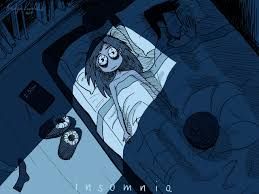Sleep Disorders - Insomnia
Apr 03, 2019 • 16 views
Understanding Sleep Disorders
Until the 1950s, most people thought of sleep as a passive, dormant part of our daily lives. We now know that our brains are very active during sleep. Moreover, sleep affects our daily functioning and our physical and mental health in many ways that we are just beginning to understand.
During sleep, we usually pass through five phases of sleep: stages 1, 2, 3, 4, and REM (rapid eye movement) sleep. These stages progress in a cycle from stage one to REM sleep, then the cycle starts over again with stage one. We spend almost 50 percent of our total sleep time in stage two sleep, about 20 percent in REM sleep, and the remaining 30 percent in the other stages. Infants, by contrast, spend about half of their sleep time in REM sleep.
The amount of sleep each person needs depends on many factors, including age. Infants generally require about 16 hours a day, while teenagers need about 9 hours on average. For most adults, 7 to 8 hours a night appears to be the best amount of sleep, although some people may need as few as 5 hours or as many as 10 hours of sleep each day.
People tend to sleep more lightly and for shorter time spans as they get older, although they generally need about the same amount of sleep as they needed in early adulthood. About half of all people over 65 have frequent sleeping problems.
Almost everyone has nights when you can not fall asleep or when your sleep is fitful.However, in the U.S. sleep deprivation and fatigue are major health issues.Over 40 million Americans each year suffer from chronic, long-term sleep disorders and over 20 million more experience occasional sleep problems.Estimates are that between 25%-50% of Americans have difficulty with sleep.
These disorders and the resulting sleep deprivation interfere with work, driving, and social activities. They also account for an estimated $16 billion in medical costs each year, while the indirect costs due to lost productivity and other factors are probably much greater. Doctors have described more than 70 sleep disorders, most of which can be managed effectively once they are correctly diagnosed. The most common sleep disorders include insomnia, sleep apnea, restless legs syndrome, and narcolepsy.
Understanding Insomnia
The types of insomnia are: 1) difficulty falling asleep; 2) no problem falling asleep but difficulty staying asleep (many awakenings); 3) waking up too early; and 4) Sleep State Misperception. In Sleep State Misperception a person will sleep most of the night and believe they didn't sleep at all. Sleep State Misperception can cause anxiety which increases the symptoms.
Another approach to classifying insomnia list three basic types of Insomnia: 1) Transient insomnia - lasting for a few nights; 2) Short-term insomnia - two or four weeks of poor sleep; and 3) Chronic insomnia - poor sleep that happens most nights and last a month or longer.
Almost everyone occasionally suffers from short-term insomnia. This problem can result from stress, jet lag, diet, or many other factors. Insomnia almost always affects job performance and well-being the next day. About 60 million Americans a year have insomnia frequently or for extended periods of time, which leads to even more serious sleep deficits. Insomnia tends to increase with age and affects about 40 percent of women and 30 percent of men. It is often the major disabling symptom of an underlying medical disorder.
For short-term insomnia, doctors may prescribe sleeping pills. Most sleeping pills stop working after several weeks of nightly use, however, and long-term use can actually interfere with good sleep. Mild insomnia often can be prevented or cured by practicing good sleep habits.
Transient and short-term insomnia generally occur in people who are temporarily experiencing one or more of the following:
• stress
• environmental noise
• extreme temperatures change in the surrounding environment
• sleep/wake schedule problems such as those due to jet lag
• medication side effects
Chronic insomnia is more complex and often results from a combination of factors, including underlying physical or mental disorders. One of the most common causes of chronic insomnia isdepression. Other underlying causes include arthritis, kidney disease, heart failure, asthma, sleep apnea, restless legs syndrome, Parkinson's disease, and hyperthyroidism. However, chronic insomnia may also be due to behavioral factors, including the misuse of caffeine,alcohol abuse, or otherdrug abuse; disrupted sleep/wake cycles as may occur with shift work or other nighttime activity schedules; and chronicstress.
Insomnia can affect not only your energy level and mood, but also your mental and physical health.It leads to diminished mental alertness and concentration.
The following behaviors have been shown to cause and/or perpetuate insomnia:
* poor sleep habits
* expecting to have difficulty sleeping and worrying about it
* ingesting excessive amounts of a stimulant such as caffeine
* drinking alcohol before bedtime
* smoking cigarettes before bedtime (nicotine is a stimulant)
* excessive napping in the afternoon or evening
* irregular or continually disrupted sleep/wake schedule
* medications, herbs and caffeine
* anxiety and worry about falling asleep
* physical problems such as pain
* stress and anxiety
* lack of exercise
* long-term use of sleep medications
* eating too much too late in the evening
* aging often results in changing sleep patterns and insomnia
* depression

